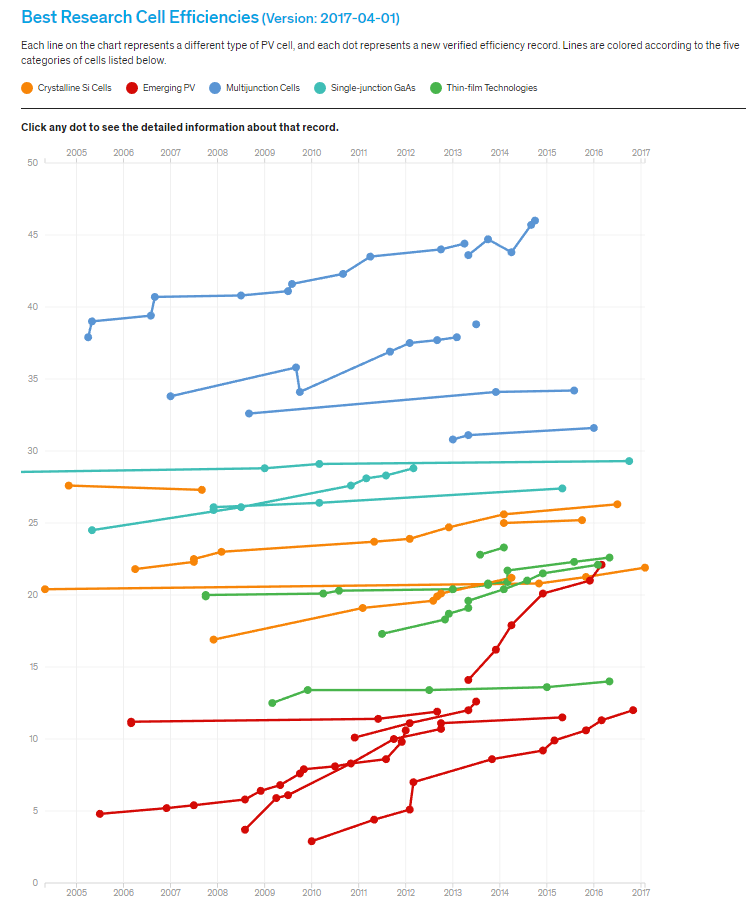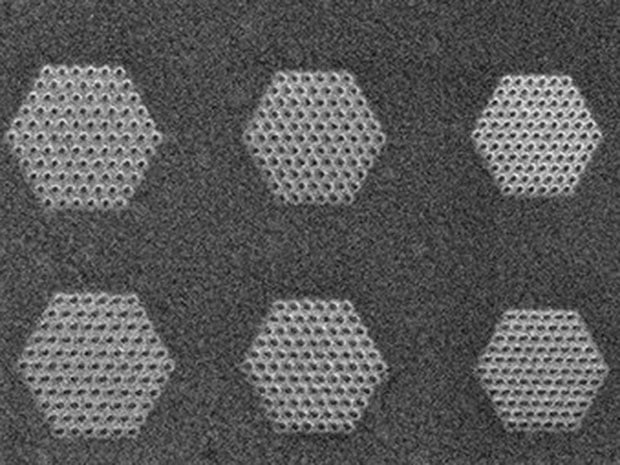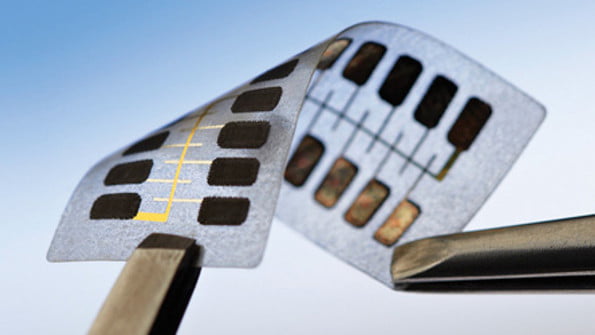Solar Cells
The primary Solar Cell material is silicon. It converts photons into electricity and the more efficient panels have a multi-layered construction.
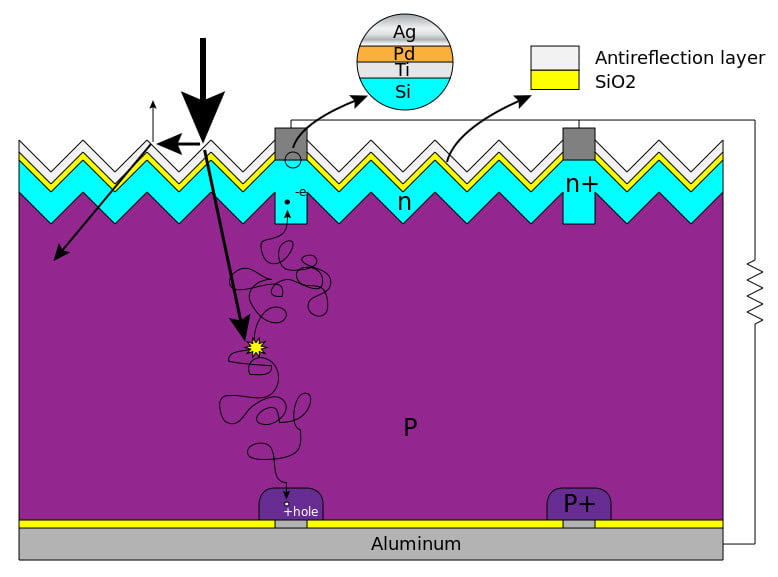
Silicon Solar Cell Construction
But it isn’t only the construction that affects the efficiency. There are other factors such as:
- Angle of Incidence of the incoming light
- Photon Density in the silicon
- reflections
- shading
These can make a significant difference to the outcome. In 2012 we received the Electronics News Future Award for The Environment. This was for our work in developing the control systems and sensors for a Tracking Solar Array. This has greater efficiency because it addressed all four of the above factors at the same time. Here is how it did that.
Angle of Incidence
The Angle of Incidence is also referred to as the Cosine Effect. As the light comes into the panel from a more acute angle, the effective area of the panel reduces and so the energy to be converted also reduces. So this means that Solar Cells produce more electricity when the sun is immediately overhead and the production falls of before and after that. So if the panel follows the sun during the day keeping the sun overhead or normal to the panel, then the amount of energy converted and electricity produced increases. But how much?
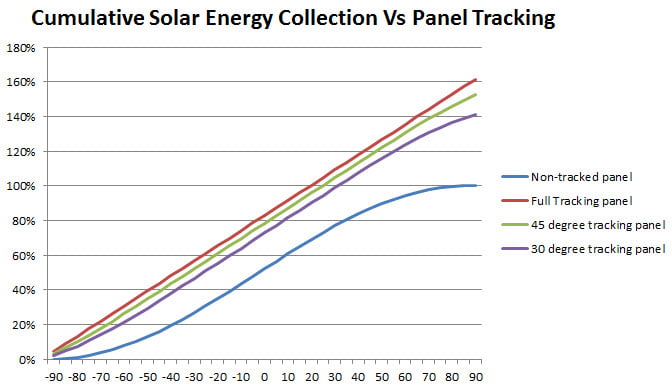
Solar Tracking Efficiency Improvement
The graph above shows the improvement in Solar Photo-Voltaic Electricity Production due to tracking the sun for either the entire day, from 45 degrees either side of midday or from 30 degrees either side of midday. Even just tracking 30 degrees either side of midday gives you 40% more electricity whereas tracking 45 degrees either side of midday produces nearly 60% more electricity. This on its own is more that the current trends in materials and panel construction are predicted to be able to achieve.
It wasn’t that long ago that a panel would not produce, in its lifetime, enough energy to recover the manufacturing energy it took to make the panel. The past 20 years have seen advances that now reverse this and a properly manufactured and installed Solar Panel is a net energy producer.
So where do the other efficiency improvements come from?
Photon Density
The Technique Solar Module used Fresnel lenses to concentrate the sunlight into strips of 1/4 cut Solar Cells. There were 10 such strips. As a result, the Photon Density went up by a factor of three. This not only allow less silicon to be used for the same amount of light, but it also increases the energy conversion efficiency. So the Solar Cells were getting a conversion efficiency above 40%. This is double the normal efficiency of higher grade Solar Panels.
The reduction in shading comes from having a smaller structure which can be positioned to maximise access to open sky.
Reflections off the inside of the individual strips were actually used to direct sunlight back onto the Solar Cells. And the cells were high grade with the best anti-reflection surface layers.
And the array was split into two sections using a Micro-Inverter on each section. Micro-Inverters are a topic for another day but they will have a big role to play in the overall move toward renewable energy at the residential and commercial level.
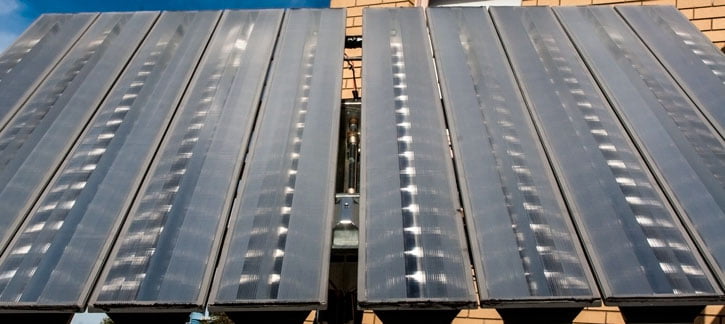
Concentrated Solar Panel Array
The array above is a linear solar array. There is a Sun Position Sensor at the centre of the linear array and the array it rotates about the central axis. This is a different approach to the work we did for Solar Systems (now part of Silex)which was a Concentrated Dish Array that did 2D tracking as shown below.
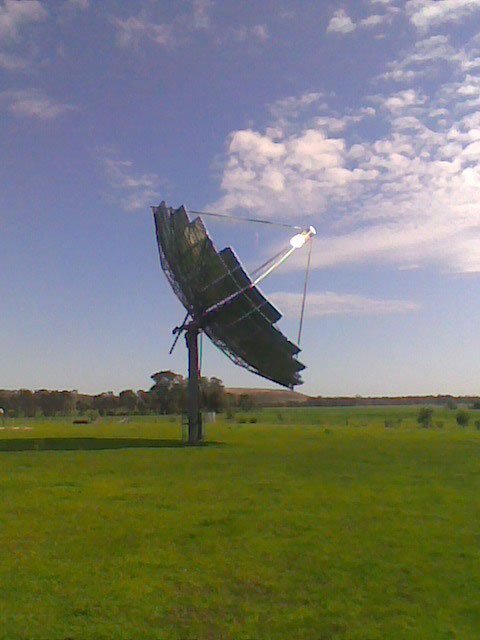
Solar Systems Dish on sun at Fosterville
What is clear is that Solar Cells and Solar Photo-Voltaic energy conversion are here to stay and will continue to grow in importance for creating energy with reduces pollution in the future. Regardless of the individual views on Global Warming and Climate Change, reducing pollution is always going to be in all of our long term interests.
Successful Endeavours specialise in Electronics Design and Embedded Software Development. Ray Keefe has developed market leading electronics products in Australia for nearly 30 years. This post is Copyright © 2013 Successful Endeavours Pty Ltd.



